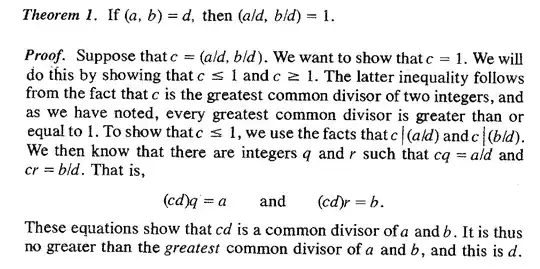So, I think that I understand the proof.
The idea is that we want to establish the inequality that says that $c\leq 1$ and with the idea that the $\gcd$ of two numbers is always greater or equal than $1$, then we will know that can't be negative or zero, thus $c=1$ (correct me if my understanding isn't correct).
The idea of how I understand a proof is that we must say only what is necessary, any excess verbose is bad. So, the part of the proof that I find weird it's when it says: "We will do this by showing that $c\leq 1$ and $c\geq 1$." Where did the author prove that the inequality $c\geq1$? Is there something that I'm missing?

Thus $cd \leq d$. Since $d$ is positive, this gives $c \leq 1$. Hence $c = 1$, as was to be proved.